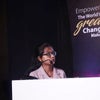How Škoda Auto Volkswagen India Is Cleverly Driving Towards a 5% Market Share Piyush Arora, MD & CEO, Škoda Auto Volkswagen India, unveils his plans to keep the ball rolling for the Indian market. From increasing capacities, expanding market share to scaling up exports, the German company has an aggressive plan of action for 2023
Opinions expressed by Entrepreneur contributors are their own.
You're reading Entrepreneur India, an international franchise of Entrepreneur Media.
The drive began in 1895. Several car manufacturers from Western Europe and overseas expressed their interest in a long-established brand – ŠKODA. During the pioneering days of automobiles, with the intervention of high-ranking Czech economic and political representatives ŠKODA was sold to Volkswagen Group in 1991.
The company's India journey commenced in 2001. On July 2, 2018, the Volkswagen Group said it will invest 1 billion euros in the India 2.0 project. Under this, Skoda and Volkswagen started developing new models specifically for the Indian market: an ambitious, but achievable objective seeking a market share of up to five per cent in the long term, depending on market and segment development.
Today, the company's India mantle is taken up by Piyush Arora, managing director & CEO Volkswagen Group - Region India, Škoda Auto Volkswagen India Pvt Ltd (SAVWIPL).
Backed by the strong sales performance of its five Group brands– ŠKODA, Volkswagen, Audi, Porsche and Lamborghini– and the success of its Made-in-India models, SAVWIPL clocked its best year in India. It sold 1,01,270 units in 2022, while exports stood at 33,397 units. Sales were up 86 per cent year-on-year as compared to 2021.
"As part of the India 2.0 program, we started launching these cars just one and a half years back. The response was extremely positive from the customers as we saw a growth of almost 86 per cent for the company group. Now, we are trying to take the momentum into this year and overall we are expecting a double digit growth over last year," says Piyush Arora.
Given the current supply chain constraint, the year 2023 has been challenging. "Compared to 2022, the 2023 numbers are a little lesser, this can be attributed to product availability and supply chain constraint among other challenges," the MD explains, adding that last year, the company recorded a market share of 2.67 per cent driven by the India 2.0 cars, and by 2025 it will gradually target a 5 per cent market share for the group.

Source: Škoda Auto Volkswagen India
Navigating Crisis & Being Resilient
Automakers and their key suppliers are rethinking their supply structures in the face of global political instability. Many are acknowledging the growing need for more localization due to the new global supply risks and tougher regulatory stipulations.
Several industries including automotive are deploying guardrails through short-term and long-term strategies to keep their supply chain resilient. Few immediate actions adopted by players are increased visibility to upstream semiconductor suppliers, activate dedicated teams to secure capacities at tier-II and engage alternate suppliers to secure volumes. Long-term interventions include expanding long term volume commitments and supplier margins, maximizing volumes by aggregating demand and acting as one voice for the entire chain (representing multiple Tier-one suppliers in the negotiations) and re-thinking product roadmap.
Arora banks on building a resilient supply chain: The short term measures include prioritizing the supply chains with global suppliers, setting up task forces, having a very clear indication of availability so as to align the rest of the supply chain with production processes and making it available in the marketplace. "In terms of long term, there are engineering options which are available where you can look at alternatives. This is normally a time consuming process, however, this is also engaging as semiconductor suppliers and critical suppliers align for a long term commitment. The last few years have been challenging and as things are getting better, we expect we will perform better in the second-half of 2023," the MD explains.
Shifting Preferences & New Launches
The group's Made-in-India models are rapidly gaining popularity and have opened new customer segments and markets. India is one of the key markets for the group and will continue to contribute strongly to its global operations. Customer preference, not only in India but globally, is moving towards SUVs, but Arora believes there is a good space in the Sedan market as ŠKODA Slavia and VW Virtus have rejuvenated the segment.
Talking about the penetration of Sedans, the CEO explains, "India is a highly product and new launch driven market.There has not been many new launches in the segment and this could be one of the reasons that the segment took a back seat. However, I am glad that we took the chance and introduced new models. Although the general preference of customers is moving towards SUV body styling both globally and in India, a new product introduction really showed us results. This shows consumers are in for fascinating, comfortable and safe products."
"Under the India 2.0 programme, in the last one and a half years, our focus has been on consolidating the position with existing four products in the India market and making them a huge success. Besides, our MQB-A0 platform is highly flexible and we will definitely look at opportunities to bring some more variations," he adds.
As part of its EV portfolio, Audi e-tron and Porsche Taycan have achieved high resonance in the Indian market. "The strategy has been so far top down, the company entered the market with Audi and Porsche and they have been very well received. At the same time for both Skoda and Volkswagen, we are now in the stage of looking at what product should we bring in from our global portfolio, as well as what can be developed in India for the industry.The company is also testing Skoda Enyaq iV, an all-electric SUV for the Indian market," he says adding that the launch date of Enyaq iV has not been decided yet, "But early next year is the target."
Any plans of locally manufacturing Enyaq? "If there is a market which shows a prominence in those products, then we can definitely look at locally manufacturing those cars by importing the parts and components. And if there are products which can justify localization at a higher degree, then you look at that possibility as well!"
The CEO also shares insights into the luxury market penetration, "While metros remain very strong, we believe the growth will come from Tier II and Tier III cities in future."
Make In India For the World
Exports will continue to be an important part of the strategy for Skoda and Volkswagen. India will become an export hub for the company as it is set to commence exports of vehicle kits for assembly in Vietnam from next year: Assembly of the Made-in-India ŠKODA KUSHAQ and SLAVIA model will begin in Vietnam in 2024. Volkswagen is already exporting vehicles from India to Mexico and South Africa while Skoda Auto is exporting to the Middle East and North Africa. The focus on Make-in-India and SKILL INDIA has created a strong base of developers, engineers and suppliers in India and the group exports to 44 markets globally from India.
"Today we are extensively exporting the VW brand to Mexico, some of the South American markets, as well as some of the South African market. For the Skoda brand, we have started exporting the cars to the Middle East and we are looking at the Far East. And as part of our strategy in the Far East, we will be entering the Vietnam market very soon next year. The Vietnam model might be for us, a model which we can utilize even going forward for other markets where we can utilize sending parts and ascending the cars. Overall, we are bullish about the development in the Southeast Asian market.
The group also has plans to ramp up its capacities in India. "So, as we expand our product portfolio, there would be a need for us to expand our capacities."
In 2022, ŠKODA AUTO India registered its highest-ever sales volume with a growth of 125 per cent and Volkswagen India grew by 58 per cent, its highest in the past five years. The group's luxury brands maintained their upward trajectory with strong double-digit growth. In 2023, the group is aspiring for high single digit or double digit growth over 2022.










